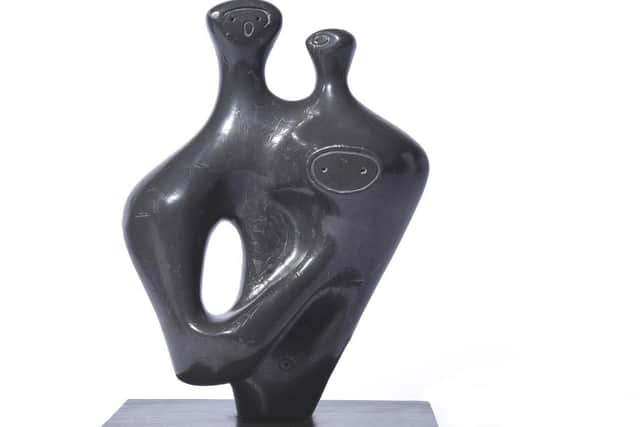Rare Henry Moore sculpture sold for eight times estimate after bidding war
and live on Freeview channel 276
The lead sculpture, titled Mother And Child, is considered “extremely rare” as it is a material the sculptor used only for a short period in the 1930s during an experimental stage in his career, the auction house said.
The piece was expected to sell for between £30,000 and £50,000 but instead a UK private collector bought it over the telephone for eight times the top estimate at Dreweatts’ Modern and Contemporary Art sale on Wednesday.
Advertisement
Hide AdAdvertisement
Hide AdThe bid closed at £320,000 but the buyer had to pay 25 per cent “buyers premium” on top taking the final price up to £400,000.


Francesca Witham, a specialist at Dreweatts, said: “We are thrilled with the amazing result achieved for the Mother And Child sculpture by Henry Moore.
“It shows that rare and unique pieces will always inspire competitive bidding and that the appetite for such works remains strong.
“The sculpture was enthusiastically contested, with bidding both online and on the phones, and, having been left undiscovered for over 40 years, this very special lead sculpture now heads to a new home with a UK private collector.”
Advertisement
Hide AdAdvertisement
Hide AdDreweatts said the piece was crafted in 1939-40, and had been a gift to the original owner, Hubert de Cronin Hastings, who at the time was the editor of The Architectural Review.
In the 1970s, it was passed down to his son, John Hastings, who kept it on his mantelpiece among an eclectic mix of objects until he died in 2019, the auction house said.
Moore was born in Castleford, West Yorkshire, in 1898, and, after training to be a teacher and serving in the British Army, he studied at Leeds School of Art and the Royal College of Art in London.
He is considered a pioneer of his craft, and was the first British artist to become globally recognised in his lifetime.
Moore’s sculptures are now seen as symbolising post-war modernism, and The Henry Moore Foundation credits his work with creating a British sculptural renaissance.
Comment Guidelines
National World encourages reader discussion on our stories. User feedback, insights and back-and-forth exchanges add a rich layer of context to reporting. Please review our Community Guidelines before commenting.